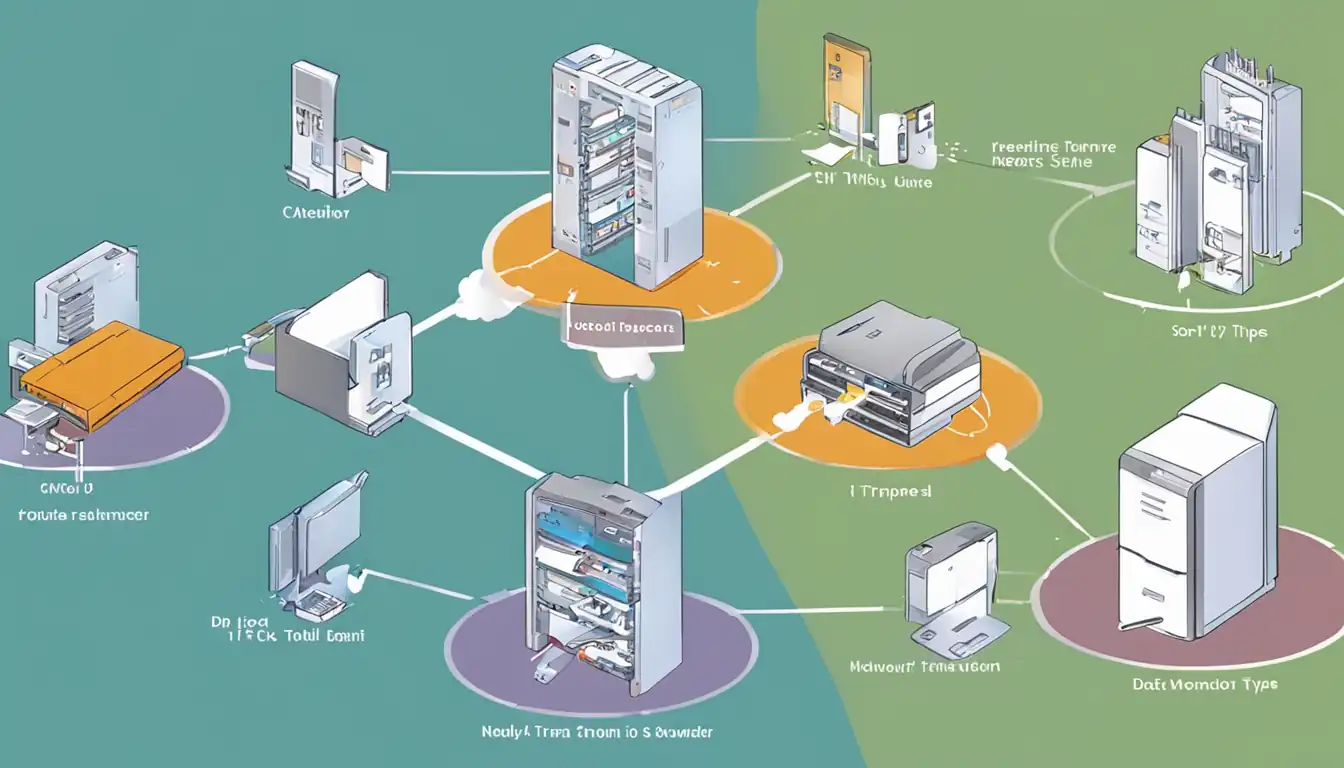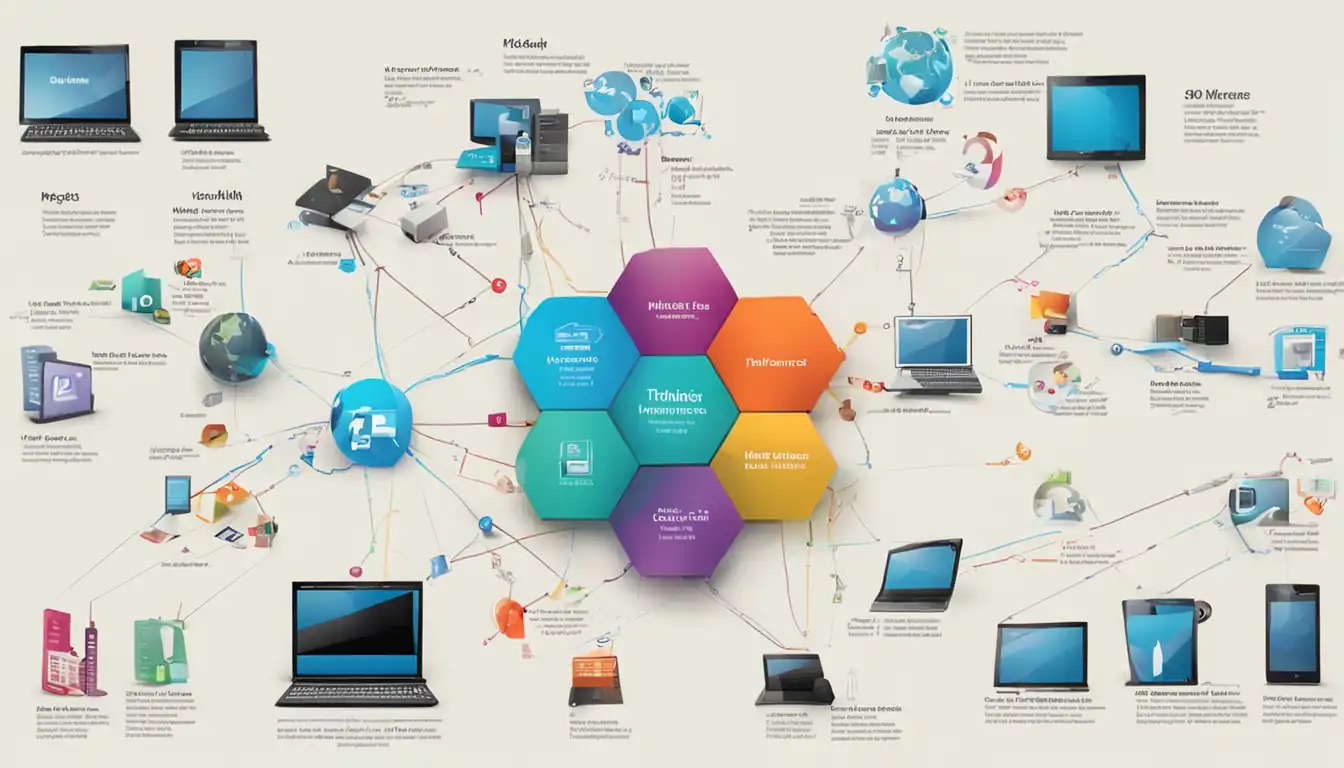Understanding File Types in Networking

Introduction to File Types in Networking
 In the world of networking, file types play a crucial role in the management and transfer of data. Understanding different file types is essential for network administrators and professionals working in the field. This article will provide an overview of various file types commonly used in networking, their importance, and how they impact network performance and security.
In the world of networking, file types play a crucial role in the management and transfer of data. Understanding different file types is essential for network administrators and professionals working in the field. This article will provide an overview of various file types commonly used in networking, their importance, and how they impact network performance and security.
Core Networking File Types
Configuration Files
Configuration files are an integral part of networking as they contain instructions and settings that define how a network device operates. These files are used to configure routers, switches, firewalls, and other network devices. Configuration files are typically written in plain text and can be edited using a text editor or specialized software.
Examples of Configuration Files
Some examples of configuration files include:
- Router configuration files (e.g., Cisco IOS configuration files)
- Switch configuration files (e.g., Juniper Junos configuration files)
- Firewall configuration files (e.g., Palo Alto Networks PAN-OS configuration files)
Firmware Files
Firmware files contain the software code that is embedded in network devices. They provide the necessary instructions for the hardware to function properly. Firmware files are typically specific to each device model and manufacturer. Regular firmware updates are crucial to ensure network devices are running the latest features, bug fixes, and security patches.
Understanding Firmware Updates
Firmware updates are released by manufacturers to improve device performance, fix vulnerabilities, and introduce new features. It is important to keep network devices up to date with the latest firmware to ensure optimal performance and security.
Log Files
Log files are generated by network devices and applications to record important events, errors, and activities. These files are invaluable for troubleshooting network issues, identifying security breaches, and monitoring network performance. Log files provide a detailed record of network events and can be analyzed to gain insights into network behavior.
The Role of Log Files in Network Management
Network administrators rely on log files to identify and resolve network issues. By analyzing log files, administrators can pinpoint the root cause of problems, track network usage, and detect any suspicious activities. Log files are also useful for compliance and auditing purposes.
Script Files
Script files are used to automate tasks and streamline network operations. These files contain a series of commands that can be executed by network devices or network management software. Script files enable network administrators to perform repetitive tasks efficiently and consistently.
Automation Through Scripting in Networking
Scripting in networking allows for the automation of tasks such as device configuration, network monitoring, and data collection. By using scripting languages like Python or PowerShell, network administrators can save time and reduce the risk of human error.
Data Transfer File Types

Packet Capture Files (PCAP)
Packet capture files, commonly known as PCAP files, are used to capture and store network traffic data. These files are essential for network troubleshooting, performance analysis, and security investigations. PCAP files contain a record of each packet transmitted over the network, including its source, destination, and payload.
Tools for Analyzing PCAP Files
Several tools are available for analyzing PCAP files, such as Wireshark, tcpdump, and tshark. These tools allow network administrators to examine network traffic, identify anomalies, and diagnose network issues.
Compressed Files
Compressed files are used to reduce the size of data for more efficient storage and transmission. These files are created by compressing one or more files using compression algorithms. Compressed files can be in various formats, such as ZIP, GZIP, or RAR.
Benefits of Compression in Data Transfer
Compression reduces the file size, resulting in faster data transfer and reduced bandwidth consumption. Compressed files are commonly used when transferring large amounts of data over the network or when sending files via email.
Executable and System Files in Networking
Binary Executable Files
Binary executable files contain machine code that can be directly executed by a computer or network device. These files are responsible for running applications and performing specific tasks. Binary executable files are specific to the operating system and hardware architecture.
Security Considerations for Executables
Due to their ability to directly interact with the system, executable files can pose security risks. It is essential to ensure that executable files are from trusted sources and regularly updated to mitigate potential vulnerabilities.
System Libraries and Drivers
System libraries and drivers are files that provide additional functionality and support for network devices and applications. These files contain code that enables the operating system to communicate with hardware devices. System libraries and drivers play a crucial role in network performance and compatibility.
How System Libraries Impact Network Performance
Efficient system libraries and drivers are essential for optimal network performance. Outdated or incompatible libraries and drivers can result in network issues, such as slow data transfer, connectivity problems, or even system crashes. Regular updates and compatibility checks are necessary to maintain network stability.
Multimedia File Types Used in Networking

Image Files for Web Content
Image files are commonly used in web content to enhance visual appeal and convey information. These files can be in various formats, such as JPEG, PNG, or GIF. Image files need to be optimized for faster network delivery to ensure a smooth user experience.
Optimizing Images for Faster Network Delivery
To optimize images for faster network delivery, techniques such as compression, resizing, and caching can be employed. By reducing the file size without compromising image quality, network performance can be improved, resulting in faster page load times.
Video and Audio Streaming Formats
Video and audio streaming formats are used to deliver multimedia content over the network in real-time. These files are designed to be streamed rather than downloaded in their entirety. Video and audio streaming formats include popular formats like MP4, HLS, and RTMP.
Challenges with Streaming File Types
Streaming file types pose challenges in terms of bandwidth requirements, network congestion, and latency. Network administrators need to ensure sufficient network capacity and implement quality of service (QoS) measures to guarantee a smooth streaming experience for users.
Document File Types in Networking
PDFs and Network Documentation
PDFs (Portable Document Format) are widely used for network documentation, manuals, and reports. These files preserve the formatting and layout across different platforms and devices. PDFs are commonly used for sharing technical information, network diagrams, and configuration guides.
Best Practices for Document Management
When managing network documentation in PDF format, it is important to establish a consistent naming convention, version control, and backup procedures. Proper document management ensures easy access, version tracking, and quick recovery in case of data loss.
Text and Markup Files
Text and markup files are used for various purposes in networking, such as network configuration files, data exchange, and web development. Common text and markup file types include TXT, XML, and JSON. Text and markup files provide a structured format for storing and exchanging data.
XML and JSON in Network Configurations
XML (eXtensible Markup Language) and JSON (JavaScript Object Notation) are widely used in network configurations. These file formats allow for the representation of complex data structures and facilitate interoperability between different systems and devices.
Security-Related File Types

Certificate Files
Certificate files are used to establish secure connections and verify the authenticity of network entities. These files contain cryptographic keys, digital signatures, and other information required for secure communication. Certificate files are crucial for implementing SSL/TLS encryption in networking.
Managing SSL/TLS Certificates in Networking
Proper management of SSL/TLS certificates involves tasks such as certificate issuance, renewal, revocation, and key management. Network administrators need to ensure that certificates are valid, trusted, and properly configured to maintain secure communication.
Key and Encryption Files
Key and encryption files are used to protect sensitive data and ensure confidentiality in network communications. These files contain encryption keys, algorithms, and other parameters required for encryption and decryption processes. Key and encryption files are essential for implementing secure communication protocols.
The Role of Encryption in Network Security
Encryption plays a vital role in network security by preventing unauthorized access to sensitive information. Network administrators must use strong encryption algorithms and properly manage encryption keys to safeguard data from potential threats.
File Type Management and Best Practices
Version Control for Networking Files
Version control is crucial for managing changes to networking files and ensuring proper documentation of revisions. It allows network administrators to track changes, revert to previous versions if necessary, and collaborate effectively. Version control tools and strategies can streamline file management processes.
Tools and Strategies for Version Control
Version control systems like Git or Subversion provide features for tracking changes, merging modifications, and maintaining a history of file revisions. Network administrators should establish version control practices and utilize appropriate tools to ensure efficient file management.
Backup and Recovery of Network Files
Backup and recovery procedures are essential to protect network files from data loss, hardware failures, or disasters. Regular backups ensure that critical network files can be restored in case of unforeseen events. Backup and recovery plans should be in place to minimize downtime and ensure business continuity.
Planning for Disaster Recovery
Network administrators should develop comprehensive disaster recovery plans that include regular backups, off-site storage, and testing of recovery procedures. These plans help minimize the impact of network failures and ensure the availability of critical files when needed.
Conclusion
In conclusion, understanding file types in networking is crucial for effective network management, performance optimization, and security. This article provided an overview of various file types used in networking, including configuration files, firmware files, log files, script files, data transfer files, executable files, multimedia files, document files, security-related files, and best practices for file management. By familiarizing themselves with these file types and implementing best practices, network administrators can ensure smooth network operations and mitigate potential risks.
References
For further reading and resources on file types in networking, please refer to the following: